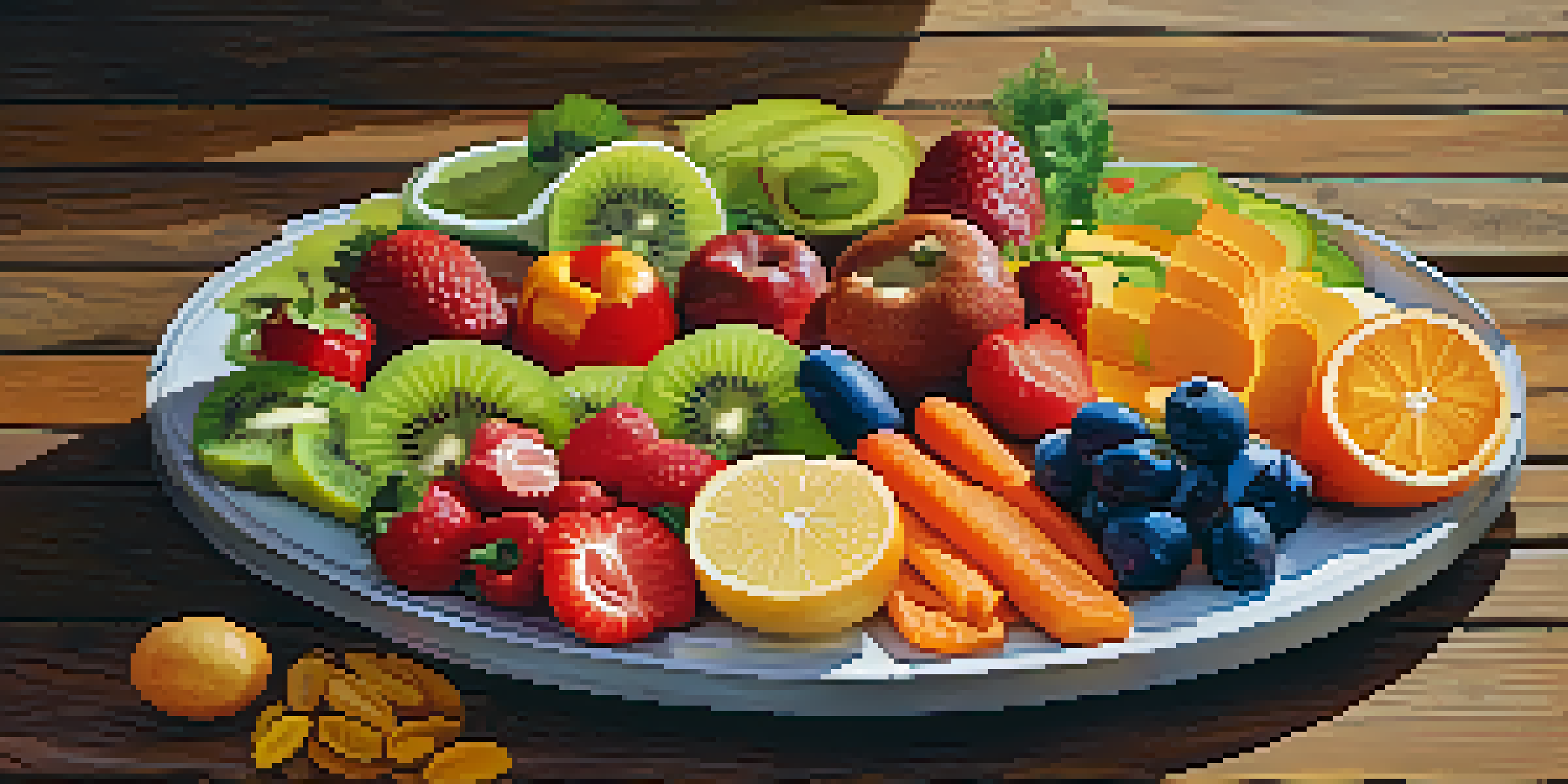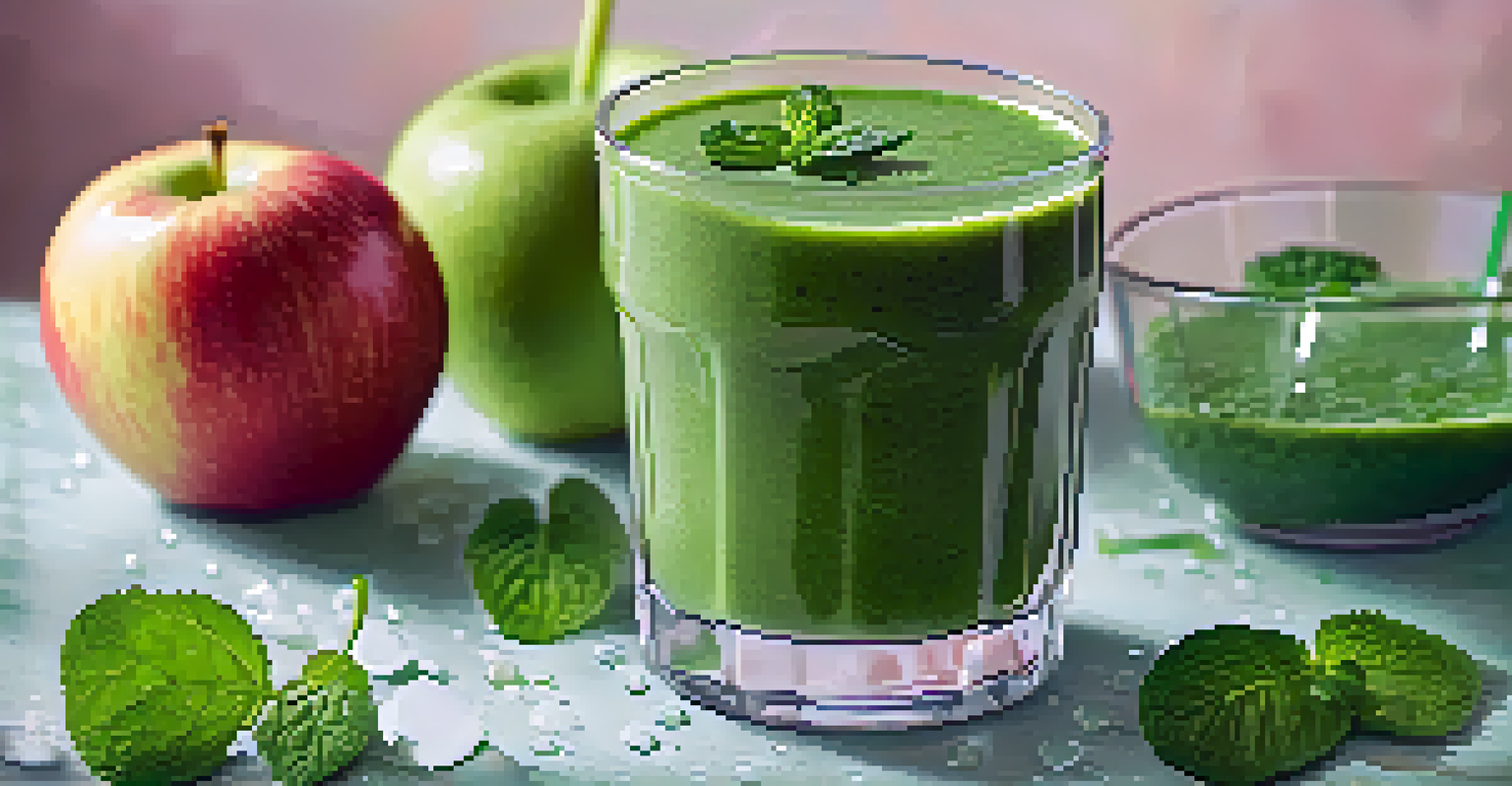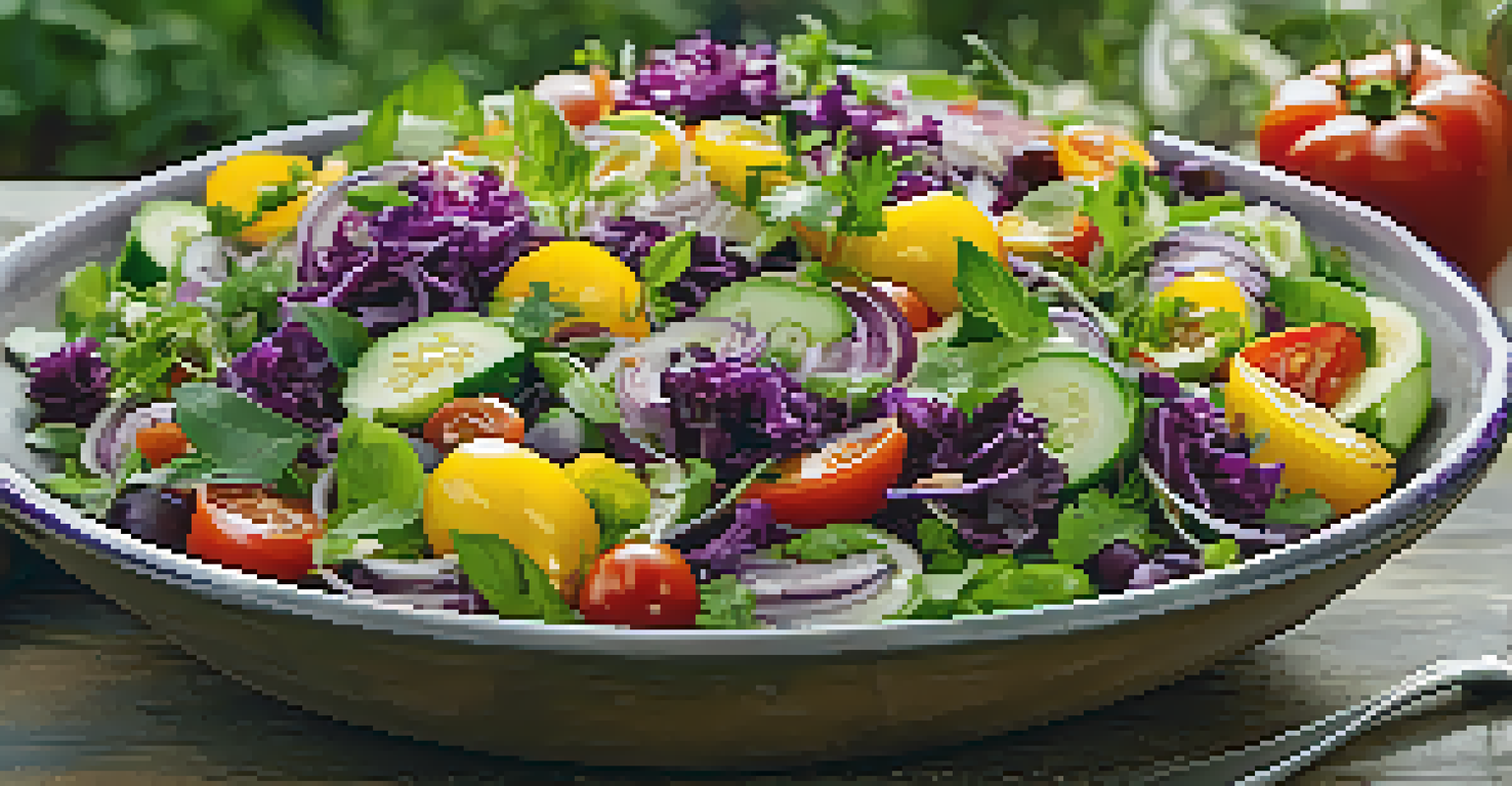The Science Behind Raw Food: Health and Culinary Benefits

Understanding Raw Food: What It Really Means
Raw food refers to food that is unprocessed and uncooked, preserving its natural state. This diet primarily includes fruits, vegetables, nuts, seeds, and sprouted grains. The idea is that heating food above 118°F (48°C) can destroy essential nutrients and enzymes, impacting your health positively.
Let food be thy medicine and medicine be thy food.
For many, transitioning to a raw food diet is driven by a desire for better health, weight management, or even ethical reasons regarding food sourcing. It’s fascinating to see how this lifestyle can influence not just physical health but also mental clarity and energy levels. Adopting raw food doesn’t mean giving up flavor; rather, it’s about rediscovering the taste of fresh ingredients.
Understanding the raw food concept is vital, as it helps in making informed choices about what we eat. It’s not just a diet; it’s a lifestyle that encourages a deeper connection with our food and health.
The Nutritional Landscape of Raw Foods
Raw foods are packed with essential vitamins, minerals, and enzymes that can be diminished during cooking. For example, vitamin C, often present in fruits and leafy greens, is sensitive to heat and can significantly decrease when cooked. Eating raw allows you to maximize your intake of these vital nutrients.

Certain foods, like carrots and tomatoes, offer more benefits when cooked, but many others shine in their raw form. Incorporating a variety of raw vegetables and fruits can lead to a well-rounded diet rich in antioxidants, which combat oxidative stress in the body. It’s all about balance and understanding which foods fit the raw food model best.
Raw Food Diet Boosts Nutrients
Raw foods retain essential vitamins and enzymes that can be lost during cooking, promoting better health.
The nutritional benefits of raw foods can lead to improved digestion, boosted energy levels, and weight loss. However, it’s essential to focus on diversity within the raw food spectrum to ensure you’re meeting all your dietary needs.
Culinary Creativity: Making Raw Food Delicious
One might assume that a raw food diet lacks flavor, but that couldn’t be further from the truth! With a bit of creativity, raw food can be just as tantalizing as any gourmet meal. Think fresh zoodles (zucchini noodles) topped with a vibrant tomato basil sauce or a rainbow salad drizzled with a zesty lemon dressing.
The food you eat can either be the safest and most powerful form of medicine or the slowest form of poison.
Experimenting with different textures and flavors is key to enjoying raw meals. Incorporating ingredients like nuts, seeds, and herbs can elevate your dishes, and blending or juicing can create refreshing drinks packed with nutrients. The possibilities are only limited by your imagination!
Raw food preparation techniques like dehydrating, sprouting, and fermenting can add depth and variety to your meals. By exploring these methods, you can create everything from raw crackers to delicious probiotic-rich kimchi, showing that raw food can be both healthy and satisfying.
The Health Benefits of a Raw Food Diet
Adopting a raw food diet is often associated with numerous health benefits, including improved digestion and enhanced energy. The high fiber content found in fruits and vegetables can promote gut health, while the abundance of water-rich foods can keep you hydrated. This combination can lead to better overall wellness.
Many people report clearer skin and weight loss after switching to a raw food diet, attributing these changes to the reduction of processed foods and refined sugars. Since raw foods are generally lower in calories yet high in nutrients, they can naturally support weight management without feeling deprived.
Creative Raw Meals Can Delight
With inventive recipes and techniques, raw food can be as flavorful and satisfying as traditional meals.
Additionally, a raw food diet can be linked to reduced risk factors for chronic diseases. Focusing on nutrient-dense foods may help lower cholesterol levels and improve heart health over time, making it a proactive choice for those looking to enhance their quality of life.
The Environmental Impact of Raw Food Choices
Choosing a raw food diet can also have a positive impact on the environment. By focusing on plant-based foods, you’re likely reducing your carbon footprint compared to a diet high in animal products. Eating local, seasonal produce also supports sustainable farming practices and reduces transportation emissions.
Additionally, raw food enthusiasts often emphasize whole, organic ingredients, which can further benefit the environment. By opting for organic produce, you’re supporting farming methods that avoid harmful pesticides and promote soil health. This conscious decision can lead to a more sustainable food system.
Being mindful of food sources and their environmental effects is an integral part of the raw food philosophy. It’s not just about personal health; it’s about making choices that contribute to a healthier planet.
Potential Challenges of a Raw Food Diet
While the raw food diet has numerous benefits, it’s essential to recognize some potential challenges. One common issue is the difficulty of obtaining all necessary nutrients solely from raw foods. For example, vitamin B12, typically found in animal products, may require careful planning or supplementation.
Additionally, some people may experience digestive discomfort as their body adjusts to higher fiber intake. It’s crucial to introduce raw foods gradually and listen to your body’s signals to avoid overwhelming your digestive system. Drinking plenty of water and chewing food thoroughly can help ease this transition.
Environmental Benefits of Raw Diet
Choosing a raw food diet supports sustainable practices by emphasizing plant-based and organic ingredients.
Social situations may also pose a challenge, as raw food options might be limited at restaurants or gatherings. Preparing your own meals and snacks can help navigate these scenarios and ensure you’re meeting your dietary preferences while still enjoying social occasions.
How to Start Incorporating Raw Foods Into Your Diet
If you’re curious about trying a raw food diet, start by gradually introducing more raw fruits and vegetables into your meals. Begin with simple swaps, like enjoying a fresh salad instead of cooked vegetables or snacking on raw nuts instead of chips. This step-by-step approach can help ease you into the lifestyle without feeling overwhelmed.
Creating a meal plan that includes a variety of raw options can make your transition smoother. Consider experimenting with smoothies, raw soups, and salads to keep your meals exciting. Using fresh herbs and spices can enhance flavors and make raw meals more enjoyable.

Joining a community or finding resources online can provide support and inspiration as you embark on your raw food journey. Sharing recipes, tips, and experiences with others can make the process more fun and fulfilling, encouraging you to explore this vibrant culinary world.